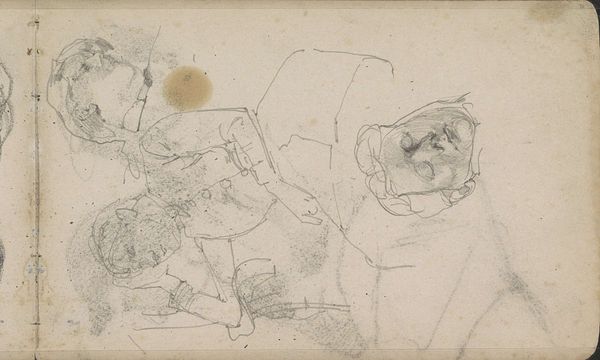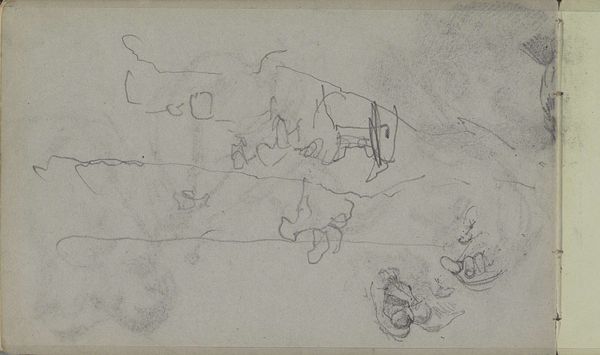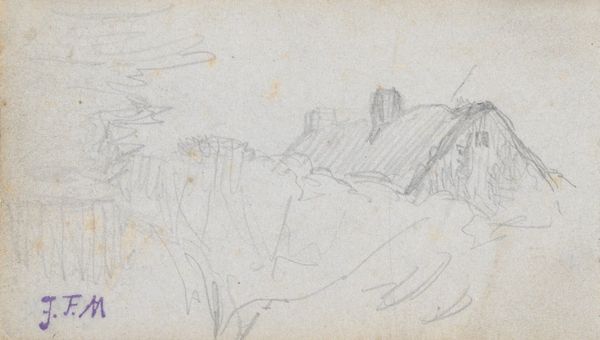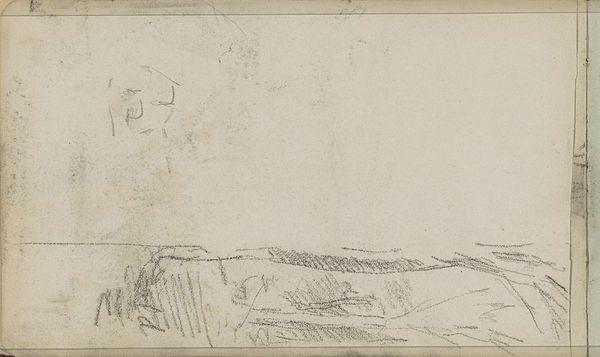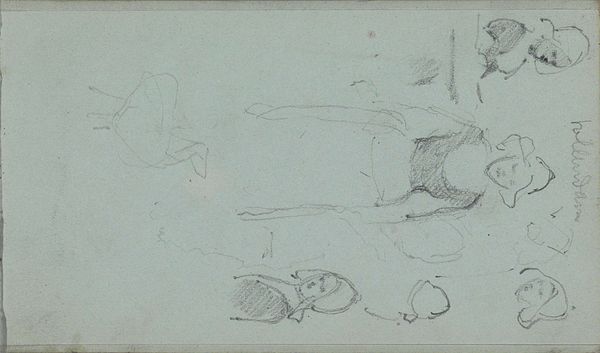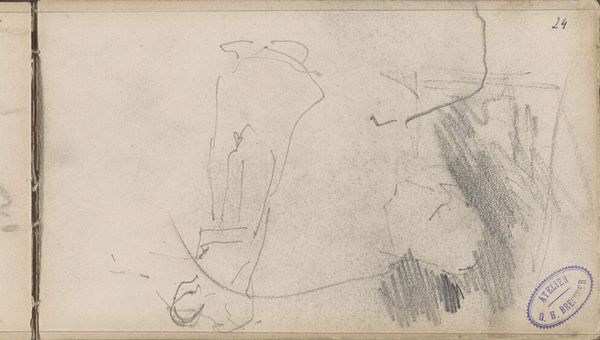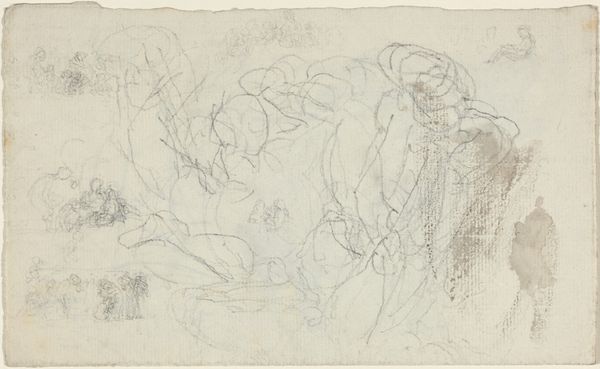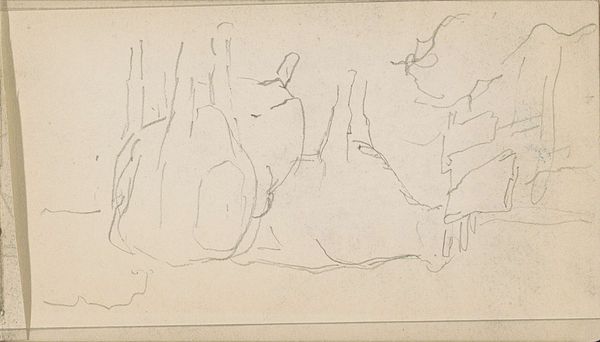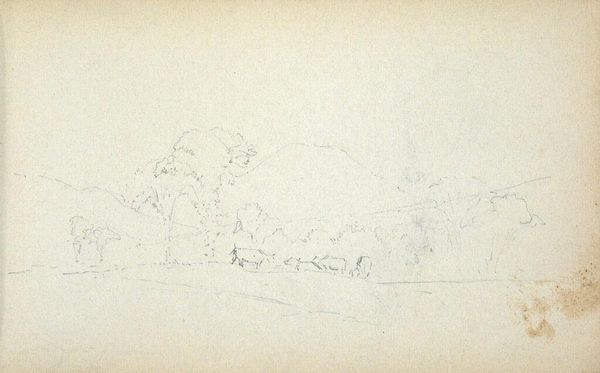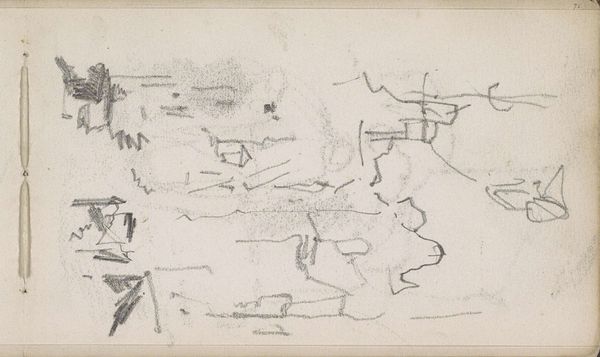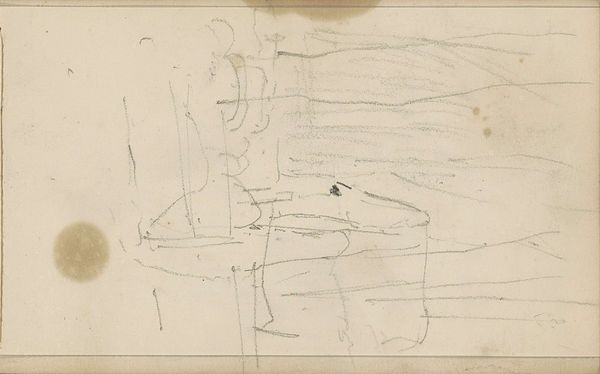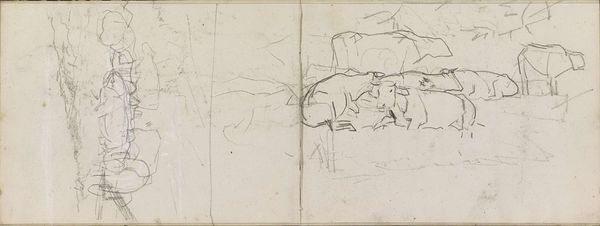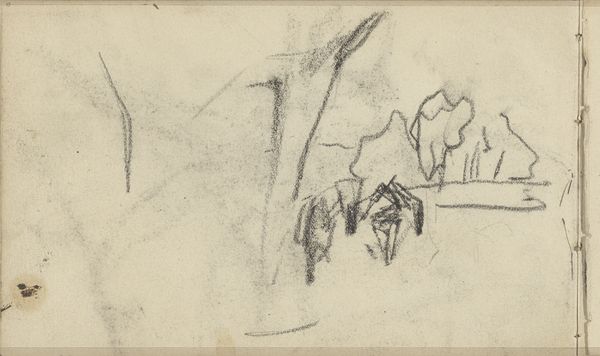
Dimensions: height 118 mm, width 196 mm
Copyright: Rijks Museum: Open Domain
Editor: Here we have "Landscape with Figures and Horses," a pencil drawing from 1895 by George Hendrik Breitner, held in the Rijksmuseum. It strikes me as incredibly immediate, almost like glimpsing the artist’s raw, unfiltered thoughts on paper. What do you make of its composition and execution? Curator: It is, as you suggest, immediate. We observe a constellation of forms: angular lines suggesting figures and animals populating a landscape defined by sparse, economical strokes. Note the layering; lines intersect and overlap, building depth, though never truly resolving into clear representational forms. Breitner avoids conventional perspective. Do you see how that affects our reading of the image? Editor: Yes, it creates a sense of flatness, pushing the figures and landscape together rather than separating them into foreground and background. The negative space seems as important as the drawn lines themselves. Curator: Precisely. That interplay between positive and negative space activates the surface. Consider the texture too: the tooth of the paper becomes a participant in the overall composition. This imbues the work with a tactile quality, doesn't it? The pencil work and toned paper are more than background, they’re essential compositional components. Editor: I hadn't considered the texture so consciously, but now I see how it amplifies the sense of immediacy. I appreciate how your reading centers on the inherent visual properties. Curator: These lines, values, and textures articulate an image through the exploitation of intrinsic artistic tools. These formal elements create the drawing; what it depicts remains almost secondary to the experience of the act of its making. Editor: That gives me a new lens to understand what it means to consider artmaking!
Comments
No comments
Be the first to comment and join the conversation on the ultimate creative platform.
